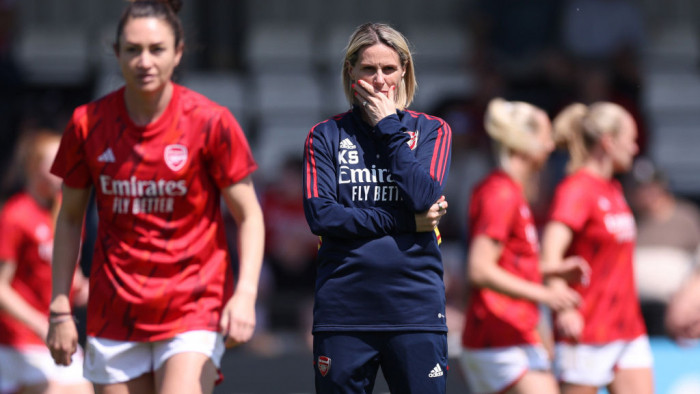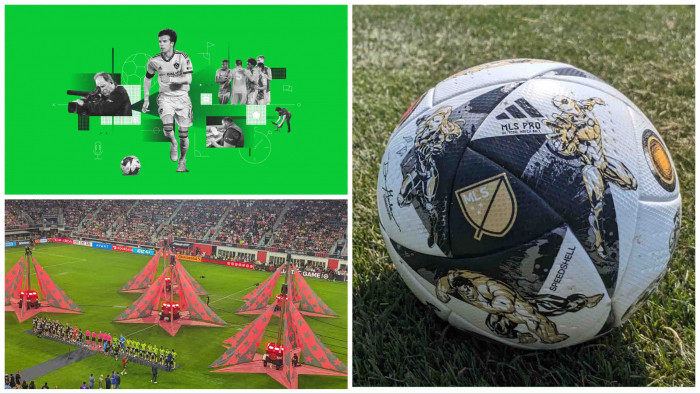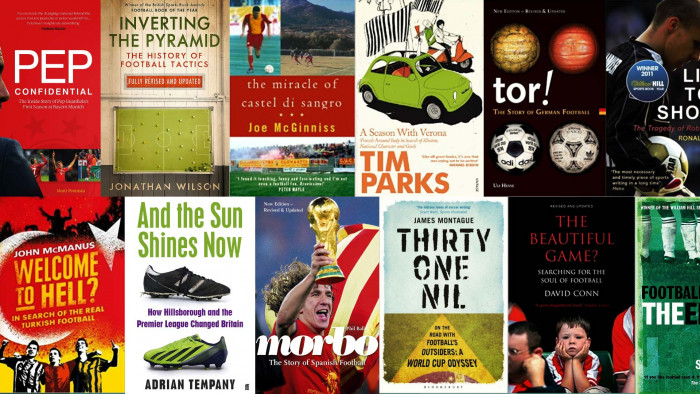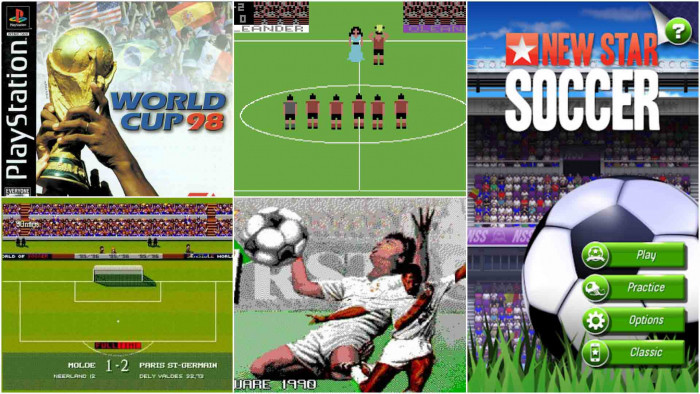The joy of living through the style and beauty of the Wenger era: where football became art
Truly, this was the beautiful game


“The only way to deal with death is to transform everything that precedes it into art.” - Arsène Wenger, paraphrasing ‘a philosopher’ (quite possibly Ralph Waldo Emerson.)
I will never know how lucky I am. I started supporting Arsenal as a 6-year-old, Arsène Wenger’s first full season at the club. In my living memory, Arsenal have always played the best football. You can add the ‘on their day’ caveat to acknowledge that we don’t always turn up, or argue that, um, actually, Barcelona have been much better during that time, or make a case for any other Pep Guardiola side, or whichever team appeals to you, but I don’t care. I support Arsenal, and so to me, they have always played the best football. On their day.
Before Arsène Wenger, fans would famously chant “boring, boring Arsenal” at us, because we notoriously played, simply, the most boring football. It’s even a boring chant. That’s how insipid we were. Or, at least, I can imagine we were. Because I never knew this Arsenal. The football played by Arsène Wenger’s Arsenal has been variously exhilarating in its tempo, mesmerising in its grace, exasperating in its failings, irresistible at its best and abject at its worst, but never boring.
Wenger hated boring. Observing a trend of Premier League sides deploying a 4-5-1 formation with a lone striker in the mid-noughties, he witheringly noted: “It is very efficient but it is very boring for the spectators.” The system was producing results for title rivals Manchester United, but these were conservative 1-0 wins, and though he would be reticent to ever say it outright, winning by military precision and procession was antithetical to Wenger’s core beliefs.
He would also be sure to assert that his Arsenal sides didn’t produce a carbon copy of Rinus Michels’ Total Football, though it’s perhaps fair to say they’ve been playing his own interpretation of the philosophy. Wenger saw an opportunity in the attributes of the Premier League to do something different with the system. The game was played far more frantically and physically in England than elsewhere in Europe. Wenger sought to harness this physicality and combine it with the Total Football ethos. His ideal player was one who could keep pace with the breakneck speed of the division, while maintaining supreme technique - Thierry Henry, for instance.

Thierry Henry celebrates a goal against Fulham in August 2005
Other managers utilise patient short passes as a conservative means to retain possession and slow the game to a crawl, to protect the ball and to wind down the clock. Wenger demands constant expansive movement, that his players greedily devour space like NASA probes. Pass and move, pass and move. He wants them to weave ornate patterns across every inch of the pitch, to render defenders helpless like flies in impossible spider webs. He doesn’t want his players to simply follow instruction - pass the ball, give it out wide, put in the mixer - but to think intuitively for themselves, to change the game in instant, to do the unexpected.
“The best way to win is to play in a way where everybody expresses their talent,” he contends. “The pleasure in football Is to give moments of happiness.”
He’s right. Winning sure feels great and all, but the memory of a hard-fought three points soon fades. Those moments of happiness, those serotonin offerings from the football Gods, they don’t.
It’s hard to pick the singular best goal of the Wenger era. Thierry Henry with his back to goal outside the box, nonchalantly flicking the ball up, pirouetting 180-degrees, and thwacking it beyond Fabien Barthez - beyond any keeper of any ability? No.
Dennis Bergkamp doing something no one had ever seen before, had ever thought to do before, and delicately caressing a ball backwards - with the inside of his foot! - to the right of Nikos Dabizas, while peeling away to the left himself, rupturing the defender’s internal organs, beating him to it and then calmly sticking it in? (A moment so pure Dabizas says he was “proud” to be involved in “a real work of art.”)
Not quite. It’s Jack Wilshere’s goal of the season against Norwich.
It’s a dance, the perfect culmination of Wenger’s entire philosophy, a goal that could be directed by the Paris Opera Ballet. It’s not an individual moment of magic, it’s three players - Santi Cazorla, Olivier Giroud and Wilshere - placing absolute faith in each other, feeding off one another’s improvisation as though jazz musicians. It’s intuitive one-touch football so fast and so deft that the Norwich players end up just standing still and marvelling as Wilshere taps it in. It’s football transformed into art. Other people seem to value the long-range screamer, but these are hit and hopes! Where’s the build in tension? Where’s the design?
One (and only one) aspect that makes for more enjoyable spectacle in rugby than football is the way surges in momentum can draw you out of your seat in anticipation of a try being scored, well in advance of it actually happening. Goals in football often occur quite unexpectedly and instantaneously. It’s a staccato sport. One moment the ball’s in play, then it’s abruptly in the back of the net. Goals are precious and infrequent. It’s hard to tell whether an attack will actually result in anything, or just collapse harmlessly before you’ve even got to your feet. What I’m trying to say is: in rugby, you can find yourself repeatedly yelping “go on!” in escalating cadences while the ball is still in your side’s own half. With football, you’re lucky if you can squeeze in a solitary “go on!” in the seconds between a cross being lofted into the box and the big man sticking his head on it. Except if you’re watching Arsenal, on their day.
All it takes is a single well-timed flick inside their own half and suddenly everyone’s marauding forward at pace. The Arsenal players are moving urgently and deliberately, as though executing a tightly choreographed heist. The crowd sense something’s afoot, though they don’t know quite how it well end yet. It sends opponents into scurrying panic, well before play has even reached the box. When they’re in the mood, it’s genuinely electrifying stuff, the sort of football that should have the Indiana Jones theme under it, Arsène Wenger’s equivalent of en garde!
These passages of play didn’t always produce goals, or even results, but they gave you moments. Though there was a time when they’d regularly achieve all three, and opposition fans would hate us for this. We didn’t just win, we won the right way, and we were sanctimonious as hell about it.
In time, teams learned to neuter Arsenal by sitting deep. His teams would keep possession, fruitlessly trying to find space in behind, but the opponent didn’t seem to want the ball back. If they didn’t come for the ball, they didn’t surrender position, and so the space didn’t exist. They were more than content to watch Arsenal harmlessly pass it between themselves, as though they were trying to knock down a brick wall by playing hacky sack in front of it. Every once in a while, these sort of opponents would manage to loft it up to their big man, who would nick a goal, and Arsenal would lose. Wenger had no idea how to adjust his approach to remedy this stalemate, or else he didn’t want to - not if it involved sacrificing style.
Now we must prepare for a post-Prof era. It seems inconceivable that Arsenal would hire someone who wouldn’t carry on Wenger’s tradition - that they even could hire someone who wouldn’t - but one must remember that football clubs are multi-billion pound businesses increasingly beholden to the interests of their owners and shareholders. The next manager could endeavour to play the most impossibly elegant cavalier stuff, but the moment it stopped producing results and started affecting profit margins, it’s not unthinkable that the commitment to aesthetics might be dropped. In modern football, the pursuit of beauty is secondary to the pursuit of riches.
How many other teams’ supporters still hold some steadfast belief that their club has a ’way’ - some delusional notion built on a memory of a time when their side played the most exciting football in the country? How often do their boards countenance complaints that a current manager isn’t respecting this way if their tactics are producing results? How does someone like David Moyes end up presiding over the infamous ‘West Ham way’? I hope it won’t be the case, but it’s certainly not beyond the realms of possibility that Arsenal could become a side which plays relentlessly efficient functional-but-uninspiring football - the kind which has delivered Jose Mourinho so much success in recent years.
It’s entirely possible that 6-year-olds who begin supporting Arsenal next season will only know a boring, boring Arsenal - that they will never know how unlucky they’ve been. What a luxury and a privilege it has been then, to have spent my lifetime following an Arsenal side that Arsène Wenger has miraculously managed to keep competitive enough that they could play the right way. The best way. A lifetime spent watching what is, essentially, 11 men punting a ball along a stretch of grass transformed into art.
(Images: Getty)
Latest
Related Reviews and Shortlists









